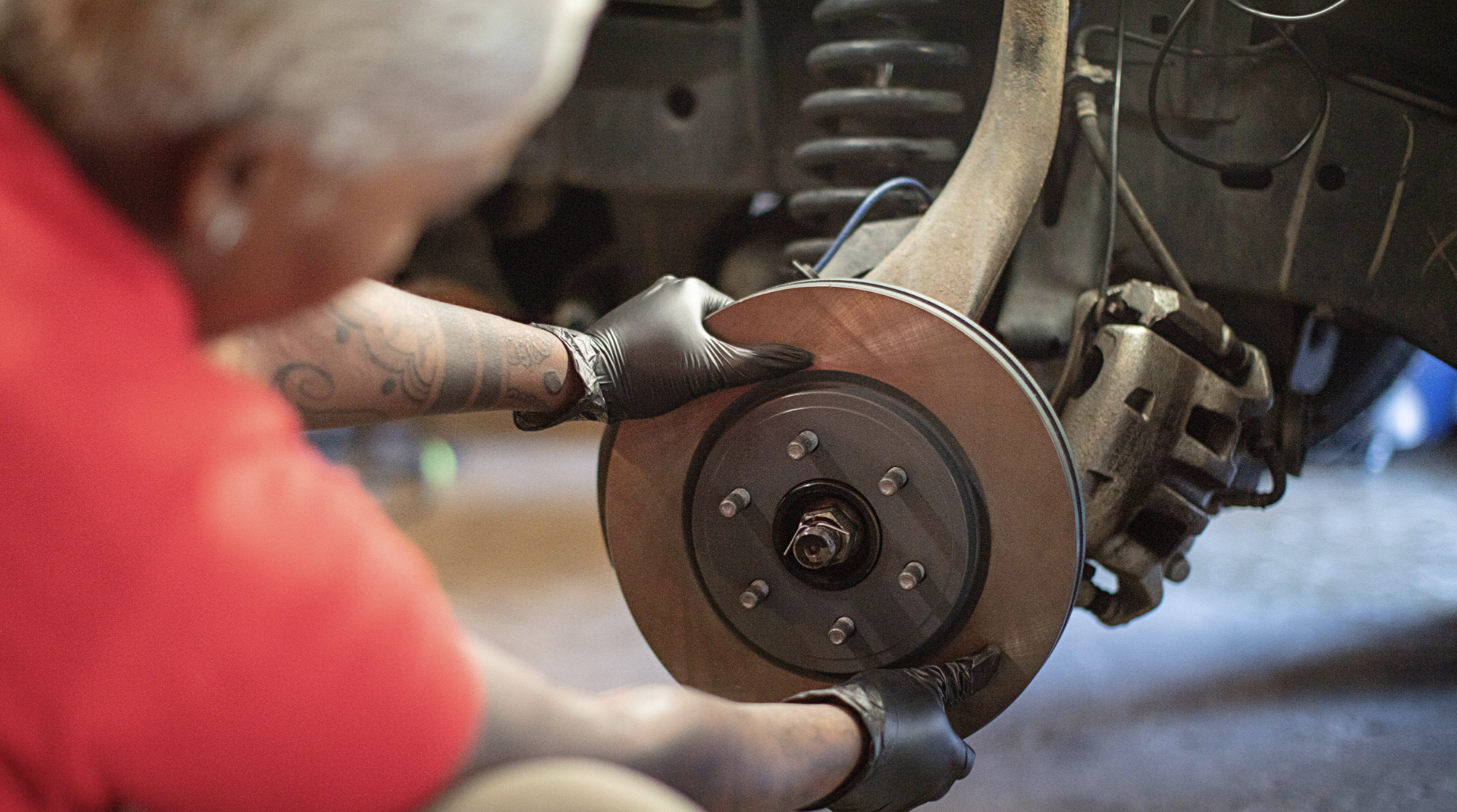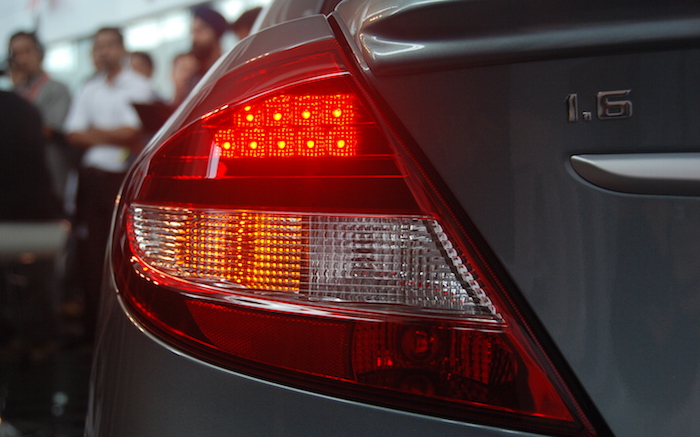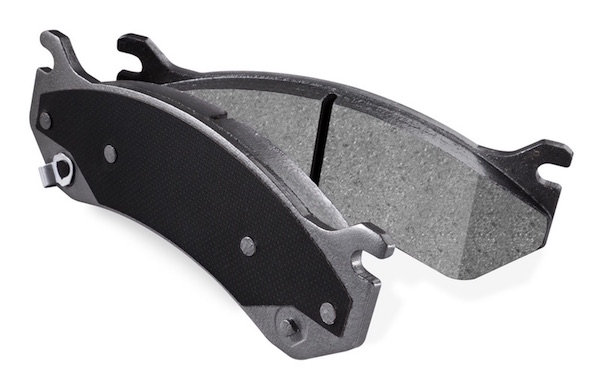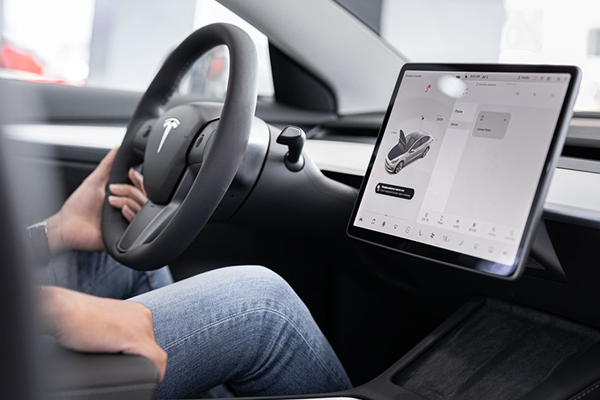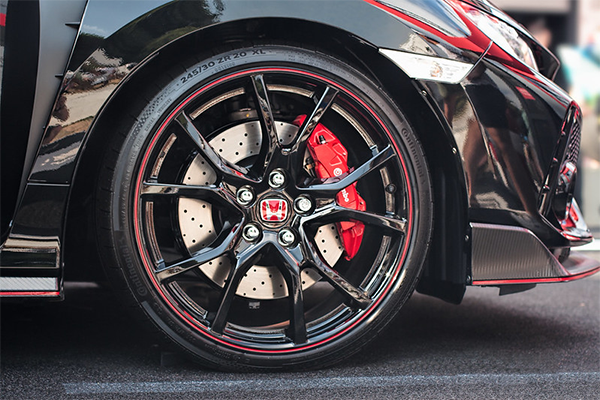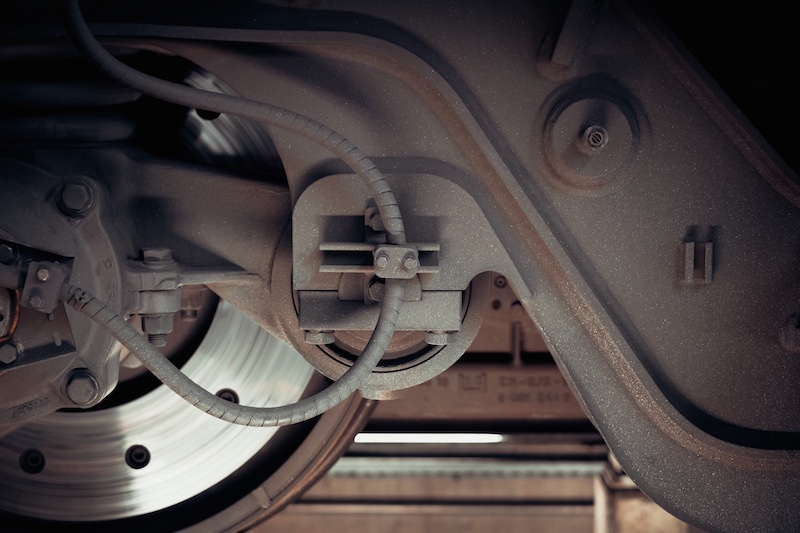Usually, we don't think much about our car's brakes. We step on the pedal and the car slows down or stops, and that's it. Consider, though, that a driver steps on the brakes tens of thousands of times in a year's worth of driving. Sometimes it's going to be a light tap on the pedal, and other times a hard stop.
Considering that brakes wear slowly and can last 40-60,000 miles according to your driving style, it can be hard to really know when they're wearing down to a point where they need replacement. That's why it's important to have a good understanding of how your brake system is designed, and how it works.
Disc Brakes
Disc brakes are similar in principle to the handbrakes on a bicycle.
Your wheels are bolted to smooth steel discs, called rotors. The rotors then have a caliper that encloses them and holds two pads of hard ceramic or semi-metallic friction material. When you step on the brake pedal, hydraulic pressure from the brake master cylinder (located on the firewall in the engine compartment) travels through the brake lines and activates a piston in the brake calipers.
When the piston activates, it forces the brake pads against the rotor's surface, slowing the vehicle down via friction.
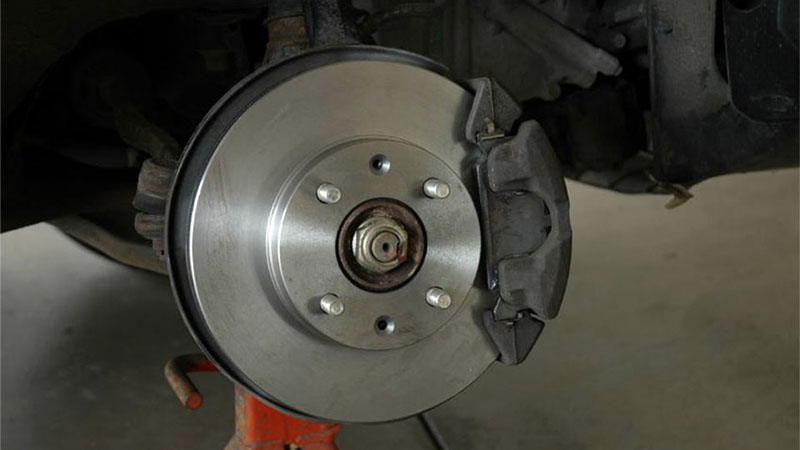
The caliper houses a piston that puts pressure on the pads when you press the brake pedal.
Drum Brakes
Drum brakes are an older system that has fallen out of favor for new vehicles, since disc brakes are simpler in design with fewer parts and also offer better braking performance. Still, there are plenty of vehicles on the road that still use drum brakes, especially for the rear wheels.
Drum brake systems use a pan-shaped drum, with the wheel studs passing through the drum. Inside the drum is a pair of curved brake shoes that fit the contour of the drum's lining. When you step on the brake pedal, a hydraulic wheel cylinder forces the shoes outward against the drum's lining, and they then retract again with stiff return springs.
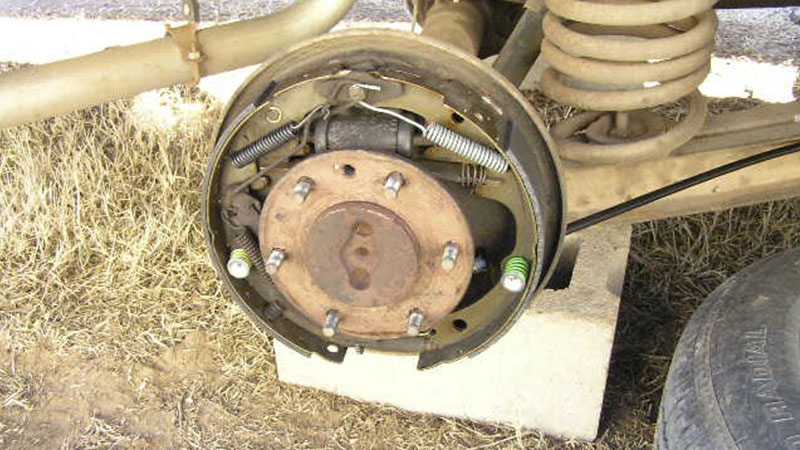
Here's a drum brake design from a 1960s Ford. Note the return springs and the curved shoes.
ABS Brakes
Since the 90s, antilock brakes have been a feature on most cars and are now standard equipment on many. ABS systems were actually developed for aircraft and are designed to enhance control by preventing lockup and skidding. ABS systems include sensors that monitor the rotational speed of each wheel, sending several pulses per second to a processor. When any wheel starts to slow down more than the rest and seems like it could be on the verge of locking up, the processor and a series of pumps and valves meter the braking force differently to the wheel(s), heading off the likelihood of a skid.
Things To Watch For
Brake Fluid
Your car's brake fluid is hygroscopic, meaning it can attract water. Unlike oil, which is heavier and will separate from water, brake fluid can actually support it, leading to problems with corrosion and damage to rubber seals. In extreme cases, droplets of water in the brake fluid can "boil off," leading to brake fade during hard braking.
Check your brake fluid level and condition regularly. Brake fluid should be light amber and clear in color. If your brake fluid is cloudy or dark, you'll need to flush the system completely, refill it with the correct brand and rating of fluid and then bleed the system of any air bubbles. From time to time, scrape a screwdriver blade along the bottom of the brake fluid reservoir in the master cylinder. If the screwdriver has any gunk on it when you pull it out, that's a sign that the fluid's contaminated.

Source | Flickr
Signs of Brake Trouble
Since your brakes wear down so slowly, it can be tough to recognize when it's time for brake service. These are all signs of worn brakes, however:
- Vibration or pulsation through brake pedal while braking
- Tendency for one or more wheels to lock up and skid while braking
- Pull to one side while braking
- Excessive brake pedal travel toward floor while braking
- Brake pedal feels "soft" or "spongy" underfoot
It's also important to listen to any noises the brakes might make. Groaning, screeching or squealing noises are all trouble signs. A metallic screech is especially worrisome - many brake pads are designed with a steel tab that protrudes from the backing plate and drags on the rotor when the pads' friction material reaches a minimum thickness. This wear indicator is designed to alert the driver that it's time to change pads.
On other pad designs that don't feature a wear indicator, a metal-to-metal grinding noise indicates that the friction surface is worn clear through to the rivets and backing plate. In that case, the only braking ability you have is coming from metal-to-metal contact, which is obviously very dangerous and will quickly destroy the smooth surface of the brake rotors.

Here's excessive brake wear in a Toyota. Note the deep scoring on the smooth surface of the rotor.
Another trouble sign is a brake pedal that slowly goes to the floor while you're holding the car at a stop, in gear. Power brakes rely on engine vacuum to multiply braking effort when you step on the pedal. If you find your brake pedal sinking or if it's suddenly as hard as stepping on a rock, chances are your power brake booster is on its way out or there's a vacuum leak between the booster and engine.
Making Your Brakes Last Longer
- Watch your speed: Braking from 65 mph means arresting about a third more kinetic energy than braking from 55 mph. The formula for braking is to multiply half the vehicle's weight by the square of its speed, so braking effort goes up exponentially with speed. That extra ten MPH of speed causes a lot more brake wear and heat than you might think!
- Use your right foot only: Some people have adopted the habit of braking with the left foot, and that's a good habit to break. If you use your left foot on the brakes, you're constantly tempted to hover that foot over the brake pedal and tap the brakes when you don't really need to.
- Coast: See that offramp coming up? Don't brake right when you get up to it. Instead, just let your foot off the gas a good way back and coast up to it, then let your car scrub off speed as you negotiate the turn. Coasting and avoiding using the brakes altogether can cut a lot of brake wear.
- Anticipate stops: Start braking a couple of hundred yards back when you come up to a red light, rather than waiting until the last minute and stabbing the brake pedal. You might even be able to time it so that you roll up to the intersection just as the light turns green. This also means looking down the road and getting the big picture. One way to develop this habit is to use a dry-erase marker and draw a thin line at eye level on the windshield. Get used to keeping your focus above that line and rely on peripheral vision for lane management and spatial awareness of other vehicles.
- Upgrade and save: Brakes are a part where it doesn't pay to cheap out. There are several compounds and formulations for brake pads, all of which have different wear characteristics, and in just about every instance cheaper pads won't last as long. Don't be penny-wise and pound-foolish; go ahead and spring for the better-quality brake pads.
Brake wear can vary. If you tow heavy loads often or drive in hilly terrain, you may need to replace your brakes faster. Sensible driving habits help a lot, though, and you should remember to inspect your brake system at every oil change. For more guidance on your braking system, check out our comprehensive guide to maintaining your brakes.

Carquest Brake Comparison Chart

